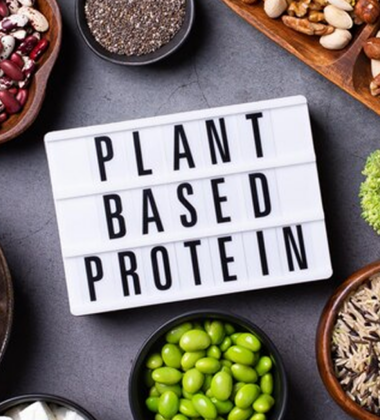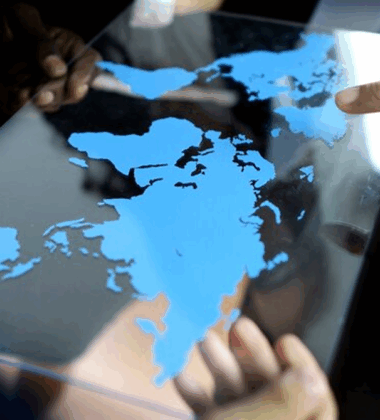Why do some products become the talk of the trade show while others barely make it out of sample trays? The answer isn’t just innovation—it’s exposure marketing done right.
At high-stakes events like the Global Products Expo USA, taking place June 26–28, 2025, every booth competes for attention. But only a handful of products earn true traction—buzz, press mentions, post-expo sales, and retailer inquiries. Their secret? Strategic exposure rooted in measurable performance.
In this deep dive, we uncover what makes expo products break through the noise, and share exposure marketing examples that transformed visibility into real results.
What Is Exposure Marketing at a Trade Show?
Exposure marketing refers to the strategic orchestration of visibility touchpoints that get a product in front of the right people, in the right way, at the right time.
At an expo, this isn’t just about foot traffic—it’s about:
- Placement strategy (where the product is seen)
- Sensory engagement (how it’s experienced)
- Social amplification (how it’s shared and remembered)
- Conversion metrics (how it performs)
Effective exposure marketing transforms passive encounters into active buzz, leading to long-term growth.
The Power of First Impressions
In the expo environment, you have three seconds to stop someone. That moment—the way your product is presented, labeled, staged, or sampled—makes or breaks initial engagement.
Consider these insights:
- 75% of trade show attendees decide whether to approach a booth based on visual exposure alone.
- Products placed at eye-level within reach are 1.6x more likely to be picked up.
- Clear, benefit-driven signage increases sample engagement by up to 30%.
Example: A health beverage brand at the 2024 Expo increased sample pickup by 48% after swapping technical nutrition claims for an experience-based label: “Clean Calm Energy You Can Feel in 10 Minutes.”
Exposure Marketing Examples That Worked
Let’s look at real-world strategies from previous expos that used exposure marketing principles to drive measurable product success.
1. Layered Sensory Activation – Gourmet Snack Brand
A gourmet nut brand deployed a three-layer exposure sequence:
- A scent diffuser released cinnamon-roast aroma.
- Samples were served warm in branded cups.
- A backlit wall looped a slow-motion crunch video.
Impact: Attendees stopped, smelled, tasted, and shared. The result? Over 2,000 samples distributed per day, 650+ social tags, and a post-event order from a national grocery chain.
2. Live Prototype Lab – Flavor Tech Startup
Rather than showcasing pre-packaged products, a flavor tech brand invited attendees to co-create beverages using a flavor dropper interface.
Why it worked: Customization deepens exposure through interaction and memory. This brand wasn’t just seen—it was experienced, remembered, and discussed.
Result: Featured in two industry blogs, captured 800+ user-generated photos, and booked 30 follow-up demos.
3. Strategic Micro-Placement – Vegan Cheese Company
Instead of relying solely on their own booth, this brand partnered with five other plant-based vendors to co-feature their product in multiple locations across the expo.
Lesson: Exposure doesn’t need to be centralized. Distributed placement drives higher recall.
Performance: 3x the booth visit rate, and their cheese became part of 18% of total show tastings—even for non-vegan audiences.
What You Should Be Measuring
Marketing exposure at an expo shouldn’t be guesswork. Here are key metrics brands should track:
1. Sample-to-Interest Ratio
How many people who sampled your product engaged in further action (questions, contact form, scan)?
Target Ratio: 1 in 4 is considered strong. Anything lower signals underwhelming impact.
2. Recall Rate
Post-sample surveys can assess how many people remember your brand after an hour or more.
Pro Tip: Use taste-memory triggers—like a surprise ingredient or strong scent—to boost recall.
3. Social Engagement
- How many people posted about your booth or product?
- Which angles or stories got reshared?
User-generated content is the proof of exposure quality—if no one’s talking, your message isn’t spreading.
How to Build a High-Exposure Expo Plan
Let’s break it down into actionable exposure marketing tactics:
1. Optimize First Contact
- Use motion (steam, drip, LED glow) to catch attention.
- Ensure your value prop is visible at a distance: one line, bold font.
- Position your best product at arm level, unobstructed.
2. Leverage Contextual Storytelling
- Don’t just explain what the product is—frame when, why, and for whom it works.
- Include callouts like “post-workout refresh” or “designed for night owls.”
Example: A chocolate brand increased engagement by labeling one flavor “Zoom fatigue relief.”
3. Create a Signature Sensory Moment
Pick one sensation and amplify it. Ideas:
- Sound: Amplify the crackle of a snack bite.
- Temperature: Serve a cold sip in a warm room.
- Aroma: Use heat to intensify a natural food scent.
These anchor the product in memory—and are more likely to generate social media traction.
4. Extend Exposure Beyond the Booth
- Drop samples at seminar entrances.
- Use QR codes that unlock exclusive tastings.
- Create partnerships with influencers attending the expo to film live tastings.
5. Activate the Exit Path
The last moment matters. Ensure your exposure ends on a compelling note:
- Offer a branded takeaway with a scan-to-buy link.
- Display a digital “What You Tasted” summary card to reinforce memory.
Exposure Marketing in the Age of AI
As expos embrace smart booths and real-time analytics, exposure marketing is evolving.
Emerging tools:
- Heat-mapping cameras to measure booth dwell time
- Emotion recognition software that gauges sample satisfaction
- AI-generated sample journeys, suggesting follow-up products based on individual reactions
At the Global Products Expo 2025, exhibitors using AI-driven insights will have a clear edge in not just attracting attention—but capturing behavior data that informs post-expo strategy.
The Role of Behavioral Psychology
Understanding attention, memory, and decision fatigue is critical in designing exposure.
Psychological Triggers to Incorporate:
- Curiosity gap: Tease a flavor without revealing it fully.
- Scarcity: “Only 100 samples per day.”
- Belonging: “Taste what insiders are buzzing about.”
Example: A kombucha brand placed a sign reading, “The Booth Next Door’s Favorite Drink”—which boosted cross-booth traffic by 23%.
Turning Exposure into Long-Term Sales
Exposure is only valuable if it translates to something more. Here’s how to close the loop:
- Collect contact info at the point of maximum engagement (immediately after a taste or conversation).
- Send a post-event email referencing exact flavors or experiences from the booth.
- Share “Behind the Expo” videos showing the brand team, product creation, or reactions from visitors.
Retention is highest when the story continues after exposure.
Final Thoughts: Visibility Is the New Currency
In a sea of sampling, what separates the best-selling expo products is not luck or louder signage—it’s intentional exposure design.
Whether through strategic product staging, immersive sensory elements, or interactive sampling, brands that break through at expos do so because they build experiences—not just display tables.
The next time you plan your booth, ask:
- Will someone remember this taste?
- Will someone share this experience?
- Will someone seek out this product again?
Because in 2025 and beyond, the winning products won’t just taste good.
They’ll perform.





